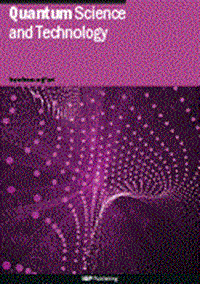The role of higher-order terms in trapped-ion quantum computing with magnetic gradient induced coupling
IF 5.6
2区 物理与天体物理
Q1 PHYSICS, MULTIDISCIPLINARY
引用次数: 0
Abstract
Trapped-ion hardware based on the magnetic gradient induced coupling (MAGIC) scheme is emerging as a promising platform for quantum computing. Nevertheless, in this—as in any other—quantum-computing platform, many technical questions still have to be resolved before large-scale and error-tolerant applications are possible. In this work, we present a thorough discussion of the structure and effects of higher-order terms in the MAGIC setup, which can occur due to anharmonicities in the external potential of the ion crystal (e.g. through Coulomb repulsion) or through curvature of the applied magnetic field. These terms generate systematic shifts in the leading-order interactions and take the form of three-spin couplings, two-spin couplings, local fields, as well as diverse phonon–phonon conversion mechanisms. We find that most of these are negligible in realistic situations, with only two contributions that need careful attention. First, there are undesired longitudinal fields contributing shifts to the resonance frequency, whose strength increases with chain length and phonon occupation numbers; while their mean effect can easily be compensated by additional Z rotations, phonon number fluctuations need to be avoided for precise gate operations. Second, anharmonicities of the Coulomb interaction can lead to well-known two-to-one conversions of phonon excitations. Both of these error terms can be mitigated by sufficiently cooling the phonons to the ground-state. Our detailed analysis constitutes an important contribution on the way of making magnetic-gradient trapped-ion quantum technology fit for large-scale applications, and it may inspire new ways to purposefully design interaction terms.高阶项在磁梯度诱导耦合阱离子量子计算中的作用
基于磁梯度诱导耦合(MAGIC)方案的捕获离子硬件正在成为一个有前途的量子计算平台。然而,在这个量子计算平台上,就像在其他任何量子计算平台上一样,在大规模和容错应用成为可能之前,许多技术问题仍然需要解决。在这项工作中,我们对MAGIC装置中高阶项的结构和影响进行了深入的讨论,这可能是由于离子晶体外部电位的非谐性(例如通过库仑排斥)或通过外加磁场的曲率而发生的。这些项在前阶相互作用中产生系统的位移,并以三自旋耦合、两自旋耦合、局部场以及各种声子-声子转换机制的形式出现。我们发现,在现实情况下,这些因素中的大多数都可以忽略不计,只有两个因素需要仔细注意。首先,存在导致共振频率偏移的不期望的纵向场,其强度随链长和声子占用数的增加而增加;虽然它们的平均效应可以很容易地通过额外的Z旋转来补偿,但为了精确的栅极操作,需要避免声子数波动。其次,库仑相互作用的非调和性会导致众所周知的声子激发的二对一转换。这两个误差项都可以通过将声子充分冷却到基态来减轻。我们的详细分析在使磁梯度捕获离子量子技术适合大规模应用的道路上做出了重要贡献,并可能启发有目的地设计交互项的新方法。
本文章由计算机程序翻译,如有差异,请以英文原文为准。
求助全文
约1分钟内获得全文
求助全文
来源期刊

Quantum Science and Technology
Materials Science-Materials Science (miscellaneous)
CiteScore
11.20
自引率
3.00%
发文量
133
期刊介绍:
Driven by advances in technology and experimental capability, the last decade has seen the emergence of quantum technology: a new praxis for controlling the quantum world. It is now possible to engineer complex, multi-component systems that merge the once distinct fields of quantum optics and condensed matter physics.
Quantum Science and Technology is a new multidisciplinary, electronic-only journal, devoted to publishing research of the highest quality and impact covering theoretical and experimental advances in the fundamental science and application of all quantum-enabled technologies.
 求助内容:
求助内容: 应助结果提醒方式:
应助结果提醒方式:


